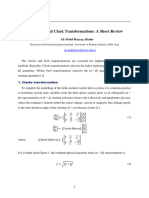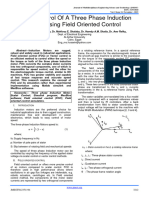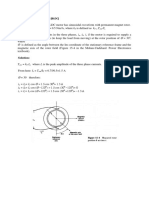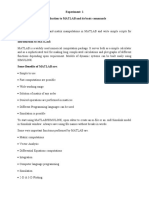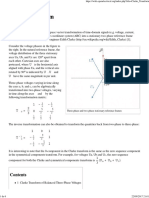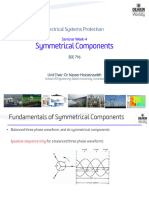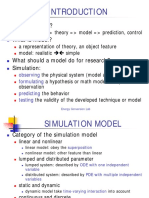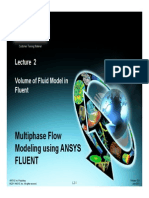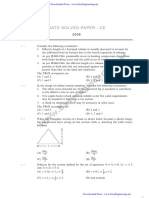Department of Electrical Engineering
Lab 02: Validation of fundamental drive equation
Analysis of Electrical Machines
Course Instructor: - Dr. Rajesh M. Pindoriya
Aim: - Validate Clarke and Park Transformation equation in the MATLAB/Simulink
environment
Objective: - To validate Clarke and Park Transformation equation in the MATLAB/Simulink
environment.
Name of the components with rating: - Mathematical tools, Scope, Connecting wire, and
Power GUI.
Brief theory: -
For such a complex electrical machine analysis, mathematical transformations are often used to
decouple variables and to solve equations involving time-varying quantities by referring all
variables to a common frame of reference.
Among the various transformation methods available, the well-known are:
1. Clarke Transformation (abc to αβ0)
2. Park Transformation (abc to dq0)
Clarke Transformation
This transformation converts balanced three-phase quantities into balanced two-phase
quadrature quantities. The Clarke Transform converts the time-domain components of a three-
phase system in an abc reference frame to components in a stationary αβ0 reference frame. It
can preserve the active and reactive powers with the powers of the system in the abc reference
frame by implementing a power invariant version of the Clarke transform. For a balanced system,
the zero component is equal to zero.
Generally, the Clarke transform uses three-phase AC quantities to make calculations simple by
transferring three-phase quantities into two-phase orthogonal axis.
1 1
1 −2 −2
α 𝑎
2 √3 √3
β = 0 − 2 𝑏
3 2
0 1 1 1 𝑐
2 2 2
Park Transformation
Park transformation converts vectors in the balanced two-phase orthogonal stationary system
into an orthogonal rotating reference frame. The Park Transform converts the time-domain
components of a three-phase system in an abc reference frame to direct, quadrature, and zero
1
components in a rotating reference frame. The block can preserve the active and reactive powers
with the powers of the system in the abc reference frame by implementing an invariant version
of the Park transform. For a balanced system, the zero component is equal to zero. The Park
Transform block implements the transform for an a-phase to q-axis alignment as:
2π 2π
𝑆𝑖𝑛(𝛉) 𝑆𝑖𝑛(𝛉 − ) 𝑆𝑖𝑛(𝛉 + )
d 3 3 𝑎
2 2π 2π
𝑞 = 𝐶𝑜𝑠(𝛉) 𝐶𝑜𝑠(𝛉 − ) 𝐶𝑜𝑠(𝛉 + ) 𝑏
3 3 3
0 1 1 1 𝑐
2 2 2
Circuit diagram:-
Fig. (1). Circuit diagram of MATLAB/ Simulink Model of Clarke and Inverse Clarke
Transformation
2
Fig. (2). Circuit diagram of MATLAB/ Simulink Model of Park and Inverse Park
Transformation
Observations:-
Fig. (3) Waveform of Input abc sine wave, conversion of abc to αβ0 (Clarke Transformation)
and αβ0 to abc (Inverse Clarke Transformation)
3
Fig. (4). Waveform of Input abc sine wave, conversion of abc to dq0 (Parks Transformation)
and dq0 to abc (Inverse Parks Transformation)
Conclusions:-
After completing this LAB we got a knowledge to simulate Clarke and Park Transformation
equation in the MATLAB/Simulink environment using mathematical tools in the
MATLAB/Simulink environment and to observe the required different waveforms.
Submitted By:
Name: - Bipin Silwal
CRN: - 079MSPDE007
Program: - MSc. in Power
Electronics and Drive
Engineering
